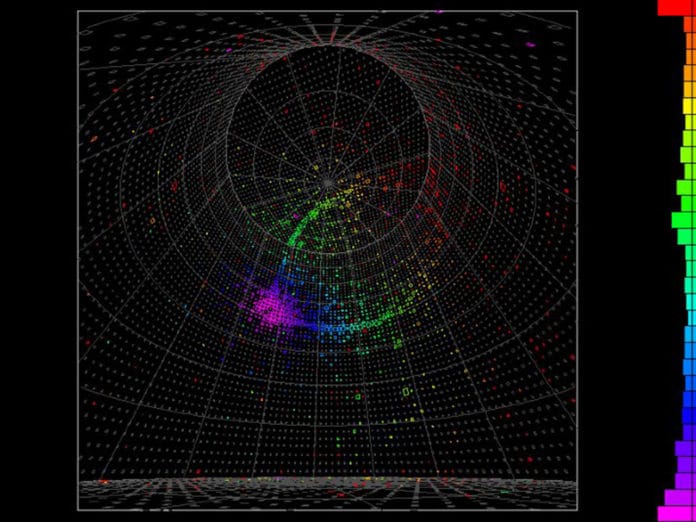A new study offers evidence that neutrinos are responsible for the universe is dominated by matter.
Why matter persists over antimatter?
This is a question that the current laws of physics can’t still explain, although scientists believe that there must be equal amounts of matter and antimatter at the beginning of the universe. But this would mean they should have wiped each other out, annihilating the universe as it began.
According to physicists, there must be differences in the way matter and antimatter behave that explain why matter persisted and now dominates the universe. They should be exact opposites in their properties and behavior, which is what makes them annihilate each other on contact.
Now a team of scientists, including from Imperial College London, made a collaboration called T2K Collaboration– offering new yet strong evidence that neutrinos and antineutrinos behave differently, and therefore may not wipe each other out. in fact, this difference is quite large.
Neutrinos are fundamental particles but do not interact with normal matter very strongly, such that around 50 trillion neutrinos from the Sun pass through your body every second.
When neutrinos and antineutrinos travel, they oscillate and change the flavor. The fact that muon neutrinos oscillate into electron neutrinos was first discovered by the T2K experiment in 2013.
In a new study, scientists fired beams of muon neutrinos and antineutrinos from the J-PARC facility at Tokai, Japan. They identified how many electron neutrinos and antineutrinos arrived at the Super-Kamiokande detector 295km away.
Scientists also observed differences in the ways that neutrinos or antineutrinos changed the flavor. They ended up discovering that neutrinos more likely to change than antineutrinos.
Dr. Patrick Dunne, from the Department of Physics at Imperial, said, “What our result shows is that we’re more than 95 percent sure that matter neutrinos and antineutrinos behave differently. This is big news in itself; however, we do already know of other particles that have matter-antimatter differences that are too small to explain our matter-dominated universe.”
“Therefore, measuring the size of the difference is what matters for determining whether neutrinos can answer this fundamental question. Our result today finds that unlike for other particles, the result in neutrinos is compatible with many of the theories explaining the origin of the universe’s matter dominance.”
Dr. Mark Scott, from the Department of Physics at Imperial, said: “The next generation of neutrino experiments, Hyper-K and DUNE, aim to discover if neutrinos oscillate differently to antineutrinos. Construction has just started for both of these detectors, with the first results expected in 2027.”
“Making the Hyper-K experiment a success will be the focus of my research for the next decade, after which we will have enough data to conclusively observe a difference between matter neutrinos and antimatter neutrinos, assuming it exists!”
For the latest result, the team contributed to the statistical analysis of the results and ensuring the signal they observe is real, as well as including the effects of how neutrinos interact with matter, which is one of the largest uncertainties that go into the analysis.
Professor Yoshi Uchida said: “Over the years, I can count as colleagues seven postdocs and twenty-one Ph.D. students who have worked on T2K at Imperial, as well as five academics and many technical staff members, all of whose contributions on the hardware, electronics, the beam, software, and physics analyses have led to this fantastic result.”
“When we started, we knew that seeing signs of differences between neutrinos and antineutrinos in this way was something that could take decades if they could ever be seen at all, so it is almost like a dream to have our result be celebrated on the cover of Nature this week.”
Professor Morgan Wascko said: “Here at Imperial, we have been intensely involved in the neutrino oscillation analysis, which uses data from our near detectors to tune and constrain our model of what the neutrino events in the far detector will look like. Dr. Scott and Dr. Dunne co-lead the working group that performs the data analysis, with Dr. Scott, focussed more on the near detector analysis, and Dr. Dunne spending more time on the far detector analysis.”
“We are also deeply embedded in the calibration of the T2K near detectors, with Dr. Per Jonsson leading that working group. The precision of our results depends on the stable operation of the neutrino detectors, and it’s no easy task to maintain high data quality from half a world away over ten years of running!”
Journal Reference:
- Constraint on the matter-antimatter symmetry-violating phase in neutrino oscillations. DOI: 10.1038/s41586-020-2177-0
